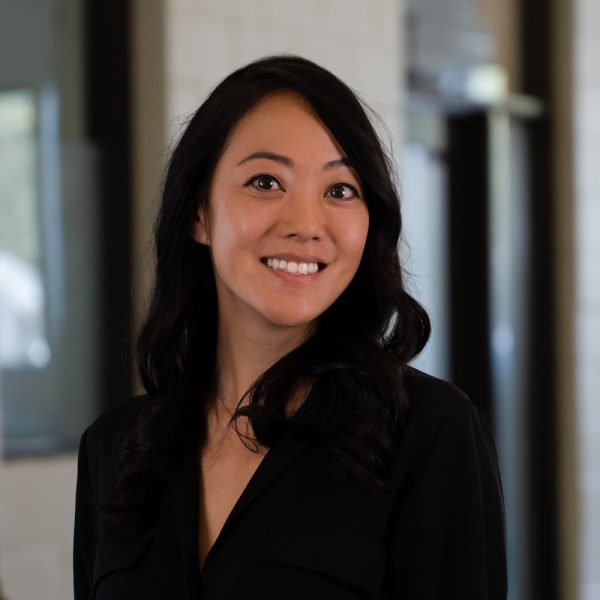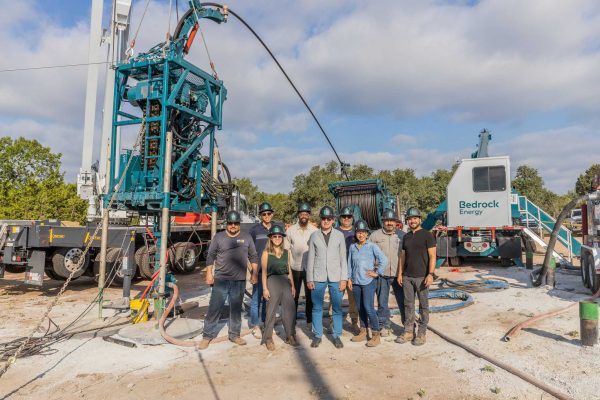Bedrock Energy is a company on a mission to transform the heating and cooling of buildings, utilizing geothermal energy to significantly reduce costs for both people and the environment. Pulse 2.0 interviewed Bedrock Energy co-founder and CEO Joselyn Lai to learn more about the company.
Joselyn Lai’s Background

What is Joselyn Lai’s background? Lai said:
“I’m a co-founder and the CEO of Bedrock Energy. I’ve been in startups for the last decade, but my passion for sustainability started much earlier—being from California, it was always part of the culture around me to care about recycling, sustainability, and the environment. Before launching Bedrock, I worked in management consulting, but I knew I wanted to work on clean energy solutions that have a real, tangible impact. Over the years, I’ve worked on sustainable agriculture, transportation, and now, decarbonizing heating and cooling for buildings.”
Formation Of The Company
How did the idea for the company come together? Lai shared:
“I met my co-founder, Silviu Livescu, who had spent years at the pinnacle of technology development in the oil and gas industry, specifically in upstream oilfield technologies. He had this insight: the same drilling technologies developed for oil and gas could be reengineered and repurposed for distributed geothermal heating and cooling. What excited me was that geothermal heating and cooling isn’t some speculative, emerging technology—it’s well-established, and we know it works. The challenge has always been cost and scalability, and we saw an opportunity to solve that. This was a way to not just decarbonize buildings, but also to make clean energy a financially compelling choice for real estate owners. That’s when we knew we had something worth building.”
Favorite Memory
What has been your favorite memory working for the company so far? Lai reflected:
“One of the most rewarding moments was completing our first commercial-scale pilot in Austin, Texas, with CIM Group. That project was a huge validation—not just for our technology, but for the entire vision behind Bedrock. We proved that we could drill faster, reduce the footprint of a geothermal system, and make it easier to integrate into real estate projects. Seeing the system fully installed and operational, knowing it would deliver clean, efficient heating and cooling for decades, was incredibly fulfilling.”
Core Products

What are the company’s core products and features? Lai explained:
“Bedrock Energy builds design and construction technology for distributed geothermal heating and cooling systems. Our core innovation is in making geothermal much more affordable, space-efficient, and scalable. Traditional geothermal systems have been limited by expensive drilling, land requirements, and the difficulty of integrating them into dense urban environments. Our technology stack—both hardware and software—solves these problems by enabling deeper, more precise drilling while reducing cost and footprint. Essentially, we’re turning geothermal from a niche solution into a scalable category of energy.”
Challenges Faced
What challenges have Lai and the team faced in building the company? Lai acknowledged:
“Absolutely. One of the biggest challenges has been the long sales cycle in real estate. From the first conversation with a customer to breaking ground can take a year or more, although we’ve also pushed some of this timeline down to a few months as well. To compress this timeline more regularly, we’ve focused on early adopters—real estate owners who have a pressing need for more efficient, lower-carbon HVAC solutions, whether it’s to meet net-zero goals, comply with energy regulations, or solve power constraints for new developments. We’re also actively working on financing models that lower the upfront cost, making it easier for customers to adopt geothermal without a major capital outlay.”
Evolution Of The Company’s Technology
How has the company’s technology evolved since its launch? Lai noted:
“When we started, we knew that cost and scalability were the biggest barriers to geothermal adoption. Since then, our drilling technology has become significantly more efficient, and we’ve developed proprietary software to optimize subsurface design and reduce installation costs. Our ability to drill deeper—1,000 to 2,000 feet—means we can shrink the land footprint by over 60%, making geothermal viable even in urban areas. And we’re continuing to push the envelope, automating more of the process to lower the training barrier for new drillers, and to make the system even more affordable.”
Significant Milestones
What have been some of the company’s most significant milestones? Lai cited:
“1. Our first commercial project in 2024: Working with CIM Group to install a geothermal system in an urban office building was a major proof point. 2. Technology advancements in 2024 and entering 2025: We’ve made huge strides in drilling speed, cost reduction, and automation. 3. Funding and expansion in late 2024: We raised a $12M Series A financing and secured equipment financing to scale up operations. 4. Growing customer pipeline for 2025: We’ve lined up multiple projects across Texas and the Mountain West, showing strong early traction.”
Customer Success Stories
When asking Lai about customer success stories, she highlighted:
“A great example is our work with CIM Group in Austin. This was a retrofit of an older office building where we were able to install a full geothermal system in their parking lot—shrinking the footprint by over 60%. The system is now up and running, demonstrating that even dense urban buildings can transition to clean, efficient heating and cooling with our technology.”
Revenue/Funding
When asking Lai about the company’s funding and revenue details, she revealed:
“Yes—Bedrock has raised over $20 million in venture funding from investors like Titanium Ventures, Energy Impact Partners, Wireframe, and Overture. We’ve also secured equipment financing, so our drilling rigs don’t rely solely on venture dollars. We are already generating revenue through commercial projects, and as we scale, we’ll be incorporating project financing to make adoption even easier for real estate owners.”
Total Addressable Market
What total addressable market (TAM) size is the company pursuing? Lai assessed:
“We are targeting a massive market. Heating and cooling make up 50% of building energy use, and every building in the world needs HVAC. With growing electrification mandates and rising energy costs, the opportunity for distributed geothermal is enormous. In the U.S. alone, there are over 5 million commercial buildings—many of which could benefit from geothermal retrofits or new installations. Our goal is to make geothermal a mainstream energy category, just like solar.”
Differentiation From The Competition
What differentiates the company from its competition? Lai affirmed:
“1. Cost & Scalability: We’re making geothermal affordable and space-efficient. Traditional systems were too expensive and required too much land—our deeper drilling technology solves that. 2. Data-Driven Drilling: Our drilling system uses real-time subsurface data to improve efficiency and reduce risk, something that’s been missing in conventional geothermal. 3. Automation & Speed: We’re developing automation that reduces labor requirements, which is a major bottleneck in the industry. 4. Bankability: By making geothermal a scalable energy asset, we’re enabling financing models that help real estate owners adopt it with minimal upfront cost.”
Future Company Goals
What are some of the company’s future goals? Lai emphasized:
“1. Expand commercialization: We’re moving from pilot projects to broader deployment across the U.S. 2. Reduce costs further: We’re targeting an 80% cost reduction over the next few years to make geothermal competitive with natural gas. 3. Develop financing models: Bringing in project financing to make geothermal a no-brainer financial decision for customers. 4. International expansion: Once we’ve proven the model in the U.S., we see global potential, especially in markets with high energy costs and carbon reduction targets. 5. Build a category: We want distributed geothermal to be as recognized and widespread as solar—an energy asset that every building owner considers.”
Additional Thoughts
Any other topics you would like to discuss? Lai concluded:
“One of the most exciting things about distributed geothermal is that it benefits both the customer and the grid. It lowers energy bills, reduces reliance on fossil fuels, and stabilizes peak electricity demand. As we continue to scale, we see Bedrock playing a key role in making cities and buildings more resilient and sustainable. The future we envision is one where geothermal is the default choice for heating and cooling—just as solar has become for electricity. We’re building that future today.”


